-
 Bitcoin
Bitcoin $115200
0.74% -
 Ethereum
Ethereum $3730
6.71% -
 XRP
XRP $3.075
4.85% -
 Tether USDt
Tether USDt $1.000
0.01% -
 BNB
BNB $766.1
1.85% -
 Solana
Solana $168.7
4.22% -
 USDC
USDC $0.9999
0.00% -
 Dogecoin
Dogecoin $0.2097
5.42% -
 TRON
TRON $0.3327
1.72% -
 Cardano
Cardano $0.7547
4.04% -
 Stellar
Stellar $0.4156
4.83% -
 Hyperliquid
Hyperliquid $38.77
1.37% -
 Sui
Sui $3.589
4.15% -
 Chainlink
Chainlink $17.09
4.86% -
 Bitcoin Cash
Bitcoin Cash $574.6
5.82% -
 Hedera
Hedera $0.2523
1.95% -
 Avalanche
Avalanche $23.01
7.68% -
 Ethena USDe
Ethena USDe $1.001
-0.02% -
 Litecoin
Litecoin $120.4
9.83% -
 Toncoin
Toncoin $3.426
-4.06% -
 UNUS SED LEO
UNUS SED LEO $8.918
-0.53% -
 Shiba Inu
Shiba Inu $0.00001250
2.49% -
 Uniswap
Uniswap $9.956
8.52% -
 Polkadot
Polkadot $3.724
3.26% -
 Monero
Monero $304.7
0.19% -
 Dai
Dai $0.9999
-0.01% -
 Bitget Token
Bitget Token $4.394
1.48% -
 Cronos
Cronos $0.1400
6.96% -
 Pepe
Pepe $0.00001076
2.83% -
 Aave
Aave $268.4
3.45%
Do NFTs support sharding or partial ownership?
Current NFT standards don't inherently support sharding due to their indivisible nature; however, innovative solutions like fractional NFTs and DAOs are enabling partial ownership, though technical and legal challenges remain.
Feb 28, 2025 at 04:12 pm
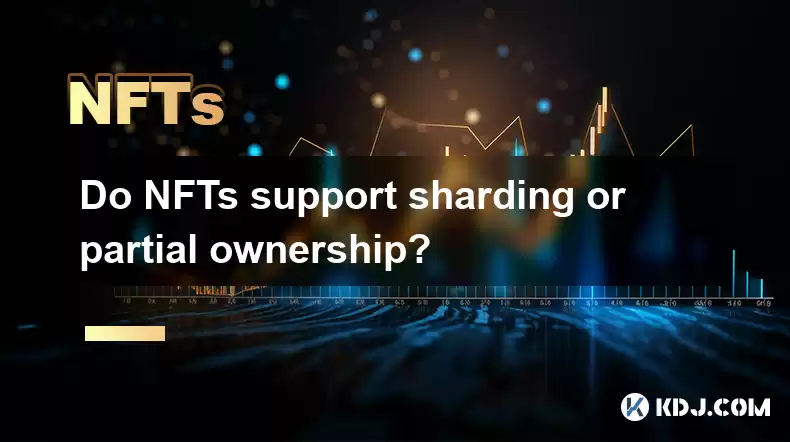
Do NFTs Support Sharding or Partial Ownership?
Key Points:
- NFTs and Sharding: Current NFT standards generally do not directly support sharding. The indivisible nature of a typical NFT clashes with the core concept of sharding, which involves dividing data across multiple nodes for scalability. However, innovative approaches are being explored to achieve similar effects.
- NFTs and Partial Ownership: While standard NFTs represent singular ownership, various methods are emerging to facilitate partial ownership. These include fractional NFTs, NFT-based DAOs, and smart contract-driven solutions. Each approach presents its own set of complexities and challenges.
- Technical Challenges and Solutions: Implementing sharding or partial ownership for NFTs requires overcoming technical hurdles related to data integrity, consensus mechanisms, and the overall complexity of managing fragmented ownership. Solutions often involve sophisticated smart contracts and novel blockchain architectures.
- Future Possibilities: The evolution of NFT technology is likely to see greater integration of sharding-like concepts and more sophisticated methods for managing partial ownership. This will unlock new possibilities for fractionalized assets, decentralized finance (DeFi), and the broader metaverse.
1. NFTs and the Concept of Sharding:
Sharding is a database technique employed to enhance scalability by dividing a large database into smaller, more manageable shards. Each shard is independently managed by a subset of nodes in a distributed network. This approach allows for parallel processing and significantly reduces the load on individual nodes, improving transaction throughput and reducing latency. However, the application of sharding to NFTs presents a fundamental challenge. Traditional NFTs, as defined by standards like ERC-721 on Ethereum, represent indivisible tokens. The core functionality hinges on the concept of a single, verifiable owner. This contrasts directly with the fragmented nature of sharded data. Dividing an NFT across multiple shards would inherently violate this principle of indivisible ownership. Imagine attempting to split a digital artwork into fragments distributed across different shards – the integrity and authenticity of the original artwork would be compromised.
To illustrate this, consider a hypothetical scenario where a high-resolution digital painting, represented as an NFT, is attempted to be sharded. If the image data itself is sharded, retrieving and displaying the complete image would require aggregating data from multiple shards, introducing latency and potential points of failure. Furthermore, verifying the authenticity of the complete image would become significantly more complex, potentially requiring verification across multiple nodes and potentially compromising the security and integrity of the NFT. This inherent conflict between the indivisible nature of an NFT and the distributed nature of sharding necessitates innovative solutions. While direct sharding of the NFT itself is impractical with current technology, alternative approaches are being explored. These could involve sharding metadata associated with the NFT, such as provenance information or access rights, while maintaining the core NFT as a single, indivisible token. This allows for scalable management of associated data without compromising the core functionality of the NFT. Further research and development are needed to fully explore the potential of these alternative approaches. The challenge lies in finding a balance between scalability and maintaining the core properties that define an NFT.
2. Exploring Partial Ownership of NFTs:
The concept of partial ownership of NFTs directly addresses the limitations of traditional NFT standards. While a single NFT typically represents sole ownership, many applications would benefit from allowing multiple parties to share ownership of a single asset. Several approaches are emerging to achieve this, each with its own set of advantages and disadvantages.
One approach involves the creation of fractional NFTs. This involves dividing a single NFT into smaller, fungible tokens, each representing a fraction of the ownership. These fractions can be traded independently, allowing for increased liquidity and wider participation. However, implementing fractional NFTs requires sophisticated smart contracts to manage the distribution and transfer of ownership fractions, ensuring that the total ownership remains consistent and verifiable. This necessitates careful consideration of aspects like dividend distribution, voting rights, and dispute resolution mechanisms within the smart contract. The complexity of such contracts can introduce security vulnerabilities if not designed and audited meticulously. Furthermore, the legal implications of fractional ownership need careful consideration, particularly concerning taxation and liability.
Another approach utilizes NFT-based Decentralized Autonomous Organizations (DAOs). A DAO can hold an NFT as a shared asset, with members having voting rights proportional to their stake in the DAO. This model allows for collective ownership and decision-making regarding the NFT's management and utilization. The complexity of managing a DAO adds another layer of complexity. The governance mechanisms within the DAO need to be carefully designed to prevent manipulation and ensure fair representation of all members. This requires a robust consensus mechanism and a clear definition of decision-making processes. Furthermore, the legal implications of a DAO holding an NFT need careful consideration.
Finally, smart contract-driven solutions can be implemented to directly manage partial ownership without explicitly creating fractional NFTs or relying on a DAO structure. These contracts can track the ownership shares of different parties and define rules for transferring ownership fractions. This approach requires a carefully designed smart contract that accurately reflects the intended ownership structure and includes mechanisms for resolving disputes. The complexity and security of such contracts are critical considerations. Improperly designed smart contracts can lead to vulnerabilities and potential loss of funds.
3. Technical Challenges and Innovative Solutions:
Implementing sharding-like mechanisms or partial ownership for NFTs presents significant technical challenges. Maintaining data integrity across multiple shards or ensuring accurate tracking of fractional ownership requires robust and secure solutions. The consensus mechanisms used to validate transactions need to be adapted to handle the increased complexity of fragmented data or shared ownership. The computational overhead of managing multiple shards or tracking ownership fractions can also impact performance and scalability.
One potential solution is the development of new blockchain architectures specifically designed to support sharding or fractional ownership. These architectures would need to address the challenges of data consistency, consensus mechanisms, and computational efficiency. This could involve exploring novel consensus algorithms or data structures that are better suited to managing fragmented NFTs. Research into zero-knowledge proofs could also play a crucial role, enabling efficient verification of ownership and authenticity without revealing the underlying data.
Furthermore, advancements in smart contract technology are crucial. More sophisticated and secure smart contracts are needed to manage the complexities of fractional ownership, ensuring accurate tracking of ownership shares and implementing robust mechanisms for dispute resolution. Formal verification techniques can help ensure the correctness and security of these contracts, minimizing the risk of vulnerabilities. The development of standardized interfaces for interacting with sharded NFTs or fractional ownership systems is also important to promote interoperability and wider adoption. This would enable developers to build applications that seamlessly integrate with different platforms and protocols.
4. Future Possibilities and Implications:
The future of NFTs likely involves greater integration of concepts similar to sharding and more sophisticated methods for managing partial ownership. This will unlock significant opportunities for the development of novel applications and business models. The ability to easily manage fractional ownership of assets could revolutionize the way we think about digital ownership and asset management. It could lead to the emergence of new financial instruments and investment opportunities, broadening participation in the digital economy.
For example, fractional ownership could allow for wider access to high-value digital assets, such as rare digital art or virtual real estate. This could democratize access to assets that were previously only accessible to wealthy individuals or institutions. Furthermore, sharding-like mechanisms could enable the creation of scalable metaverse applications, where large-scale virtual worlds can be seamlessly managed and accessed by a large number of users without compromising performance. The combination of fractional ownership and sharding-like mechanisms could also create new opportunities for collaborative projects and decentralized governance models, fostering a more inclusive and participatory digital ecosystem. However, the realization of these possibilities requires ongoing research and development to overcome the technical challenges and address the legal and regulatory implications of these innovative approaches. The ongoing evolution of NFT technology promises to significantly shape the future of digital asset management and the broader digital economy.
FAQs:
Q: Can I shard an existing NFT?
A: No, current NFT standards do not support sharding the NFT itself. Sharding typically refers to splitting data across multiple nodes for scalability, which directly conflicts with the indivisible nature of a standard NFT representing single ownership. However, you might be able to shard metadata associated with the NFT without affecting the core NFT's indivisibility.
Q: How is partial ownership different from fractional NFTs?
A: While both aim for shared ownership, partial ownership is a broader concept. Fractional NFTs are a specific implementation of partial ownership where an NFT is divided into fungible tokens representing fractions of ownership. Partial ownership can be achieved through other methods like DAOs or custom smart contracts that don't necessarily involve creating fractional tokens.
Q: What are the risks associated with partial ownership of NFTs?
A: Risks include smart contract vulnerabilities leading to loss of funds or disputes over ownership shares. The legal implications of partial ownership are still evolving and vary across jurisdictions. Careful selection of reputable developers and thorough audits of smart contracts are crucial to mitigate these risks.
Q: What blockchain technologies are best suited for implementing partial ownership?
A: Blockchains with robust smart contract capabilities and scalability are best suited. Ethereum, with its extensive smart contract ecosystem, is a popular choice. However, newer blockchains with improved scalability features might offer advantages for managing large numbers of fractional NFTs or complex partial ownership structures.
Q: Are there any regulatory considerations for NFTs with partial ownership?
A: Yes, the legal and regulatory landscape surrounding NFTs and partial ownership is still evolving. Regulations concerning securities laws, taxation, and consumer protection may apply depending on the specific implementation and jurisdiction. It's crucial to consult legal professionals to ensure compliance.
Disclaimer:info@kdj.com
The information provided is not trading advice. kdj.com does not assume any responsibility for any investments made based on the information provided in this article. Cryptocurrencies are highly volatile and it is highly recommended that you invest with caution after thorough research!
If you believe that the content used on this website infringes your copyright, please contact us immediately (info@kdj.com) and we will delete it promptly.
- Cryptocurrency, Altcoins, and Profit Potential: Navigating the Wild West
- 2025-08-04 14:50:11
- Blue Gold & Crypto: Investing Disruption in Precious Metals
- 2025-08-04 14:30:11
- Japan, Metaplanet, and Bitcoin Acquisition: A New Era of Corporate Treasury?
- 2025-08-04 14:30:11
- Coinbase's Buy Rating & Bitcoin's Bold Future: A Canaccord Genuity Perspective
- 2025-08-04 14:50:11
- Coinbase's Buy Rating Maintained by Rosenblatt Securities: A Deep Dive
- 2025-08-04 14:55:11
- Cryptos, Strategic Choices, High Returns: Navigating the Meme Coin Mania
- 2025-08-04 14:55:11
Related knowledge
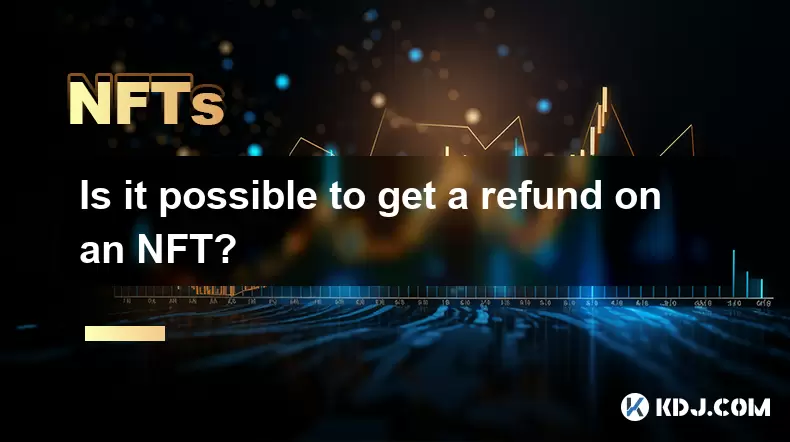
Is it possible to get a refund on an NFT?
Jul 21,2025 at 08:35pm
Understanding NFT Transactions and RefundsWhen you purchase an NFT (Non-Fungible Token), the transaction is typically recorded on a blockchain, making...
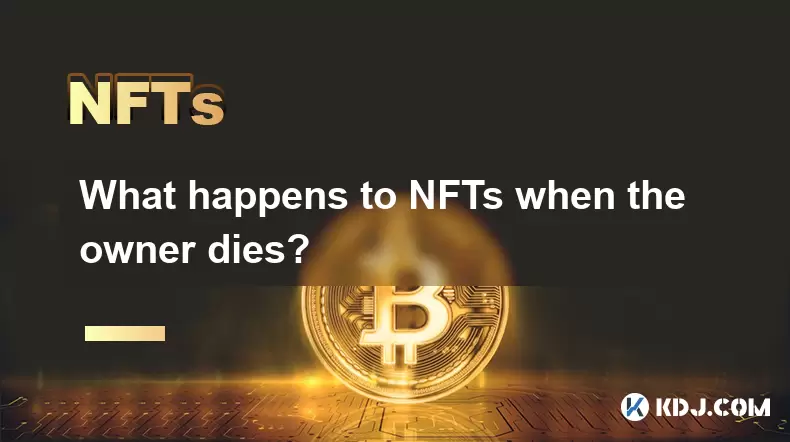
What happens to NFTs when the owner dies?
Jul 22,2025 at 02:43pm
Legal Ownership and Digital AssetsWhen an individual owns NFTs, the question of what happens to these assets upon their death is a pressing one. NFTs ...
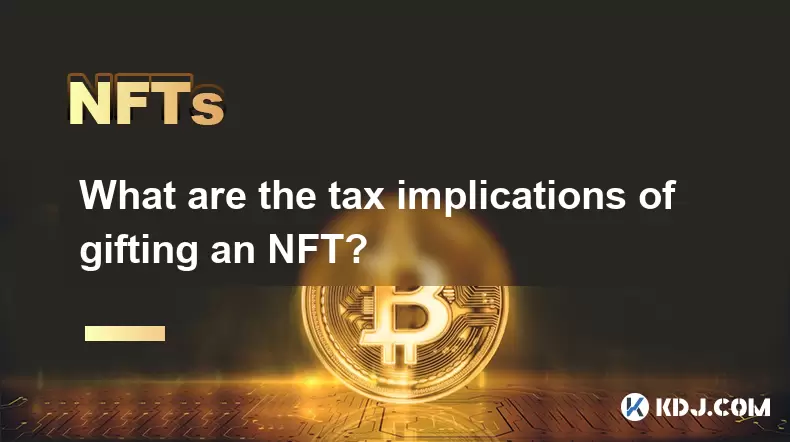
What are the tax implications of gifting an NFT?
Jul 19,2025 at 04:21am
Understanding the Basics of NFT GiftingGifting a Non-Fungible Token (NFT) involves transferring ownership from one individual to another without recei...
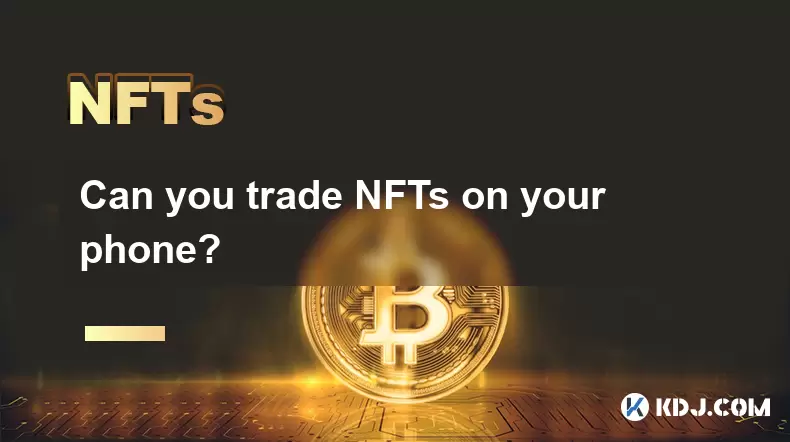
Can you trade NFTs on your phone?
Jul 18,2025 at 04:29am
Trading NFTs on Mobile DevicesYes, you can trade NFTs on your phone, and the process has become increasingly streamlined thanks to a variety of mobile...
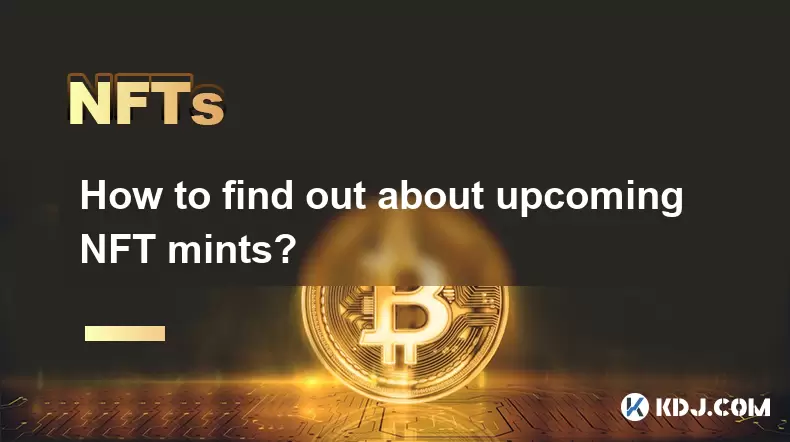
How to find out about upcoming NFT mints?
Jul 18,2025 at 11:50am
Exploring NFT Minting OpportunitiesUnderstanding the landscape of upcoming NFT mints is crucial for collectors, investors, and creators who wish to st...
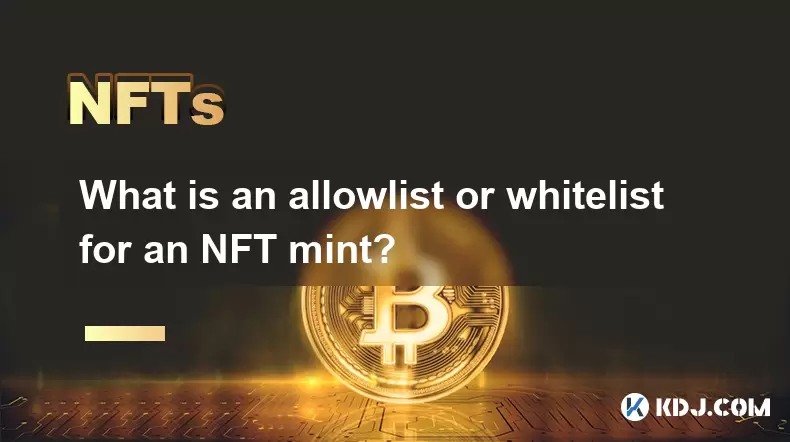
What is an allowlist or whitelist for an NFT mint?
Jul 20,2025 at 07:14pm
Understanding the Concept of an Allowlist for NFT MintingAn allowlist, also commonly referred to as a whitelist, is a mechanism used in the NFT mintin...

Is it possible to get a refund on an NFT?
Jul 21,2025 at 08:35pm
Understanding NFT Transactions and RefundsWhen you purchase an NFT (Non-Fungible Token), the transaction is typically recorded on a blockchain, making...

What happens to NFTs when the owner dies?
Jul 22,2025 at 02:43pm
Legal Ownership and Digital AssetsWhen an individual owns NFTs, the question of what happens to these assets upon their death is a pressing one. NFTs ...

What are the tax implications of gifting an NFT?
Jul 19,2025 at 04:21am
Understanding the Basics of NFT GiftingGifting a Non-Fungible Token (NFT) involves transferring ownership from one individual to another without recei...

Can you trade NFTs on your phone?
Jul 18,2025 at 04:29am
Trading NFTs on Mobile DevicesYes, you can trade NFTs on your phone, and the process has become increasingly streamlined thanks to a variety of mobile...

How to find out about upcoming NFT mints?
Jul 18,2025 at 11:50am
Exploring NFT Minting OpportunitiesUnderstanding the landscape of upcoming NFT mints is crucial for collectors, investors, and creators who wish to st...

What is an allowlist or whitelist for an NFT mint?
Jul 20,2025 at 07:14pm
Understanding the Concept of an Allowlist for NFT MintingAn allowlist, also commonly referred to as a whitelist, is a mechanism used in the NFT mintin...
See all articles

























































































